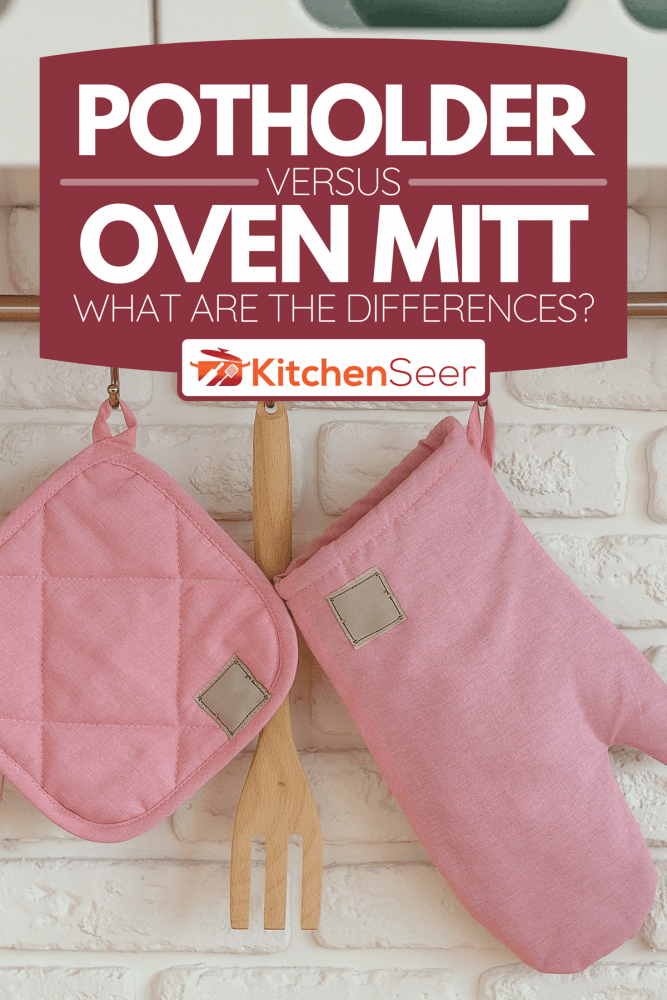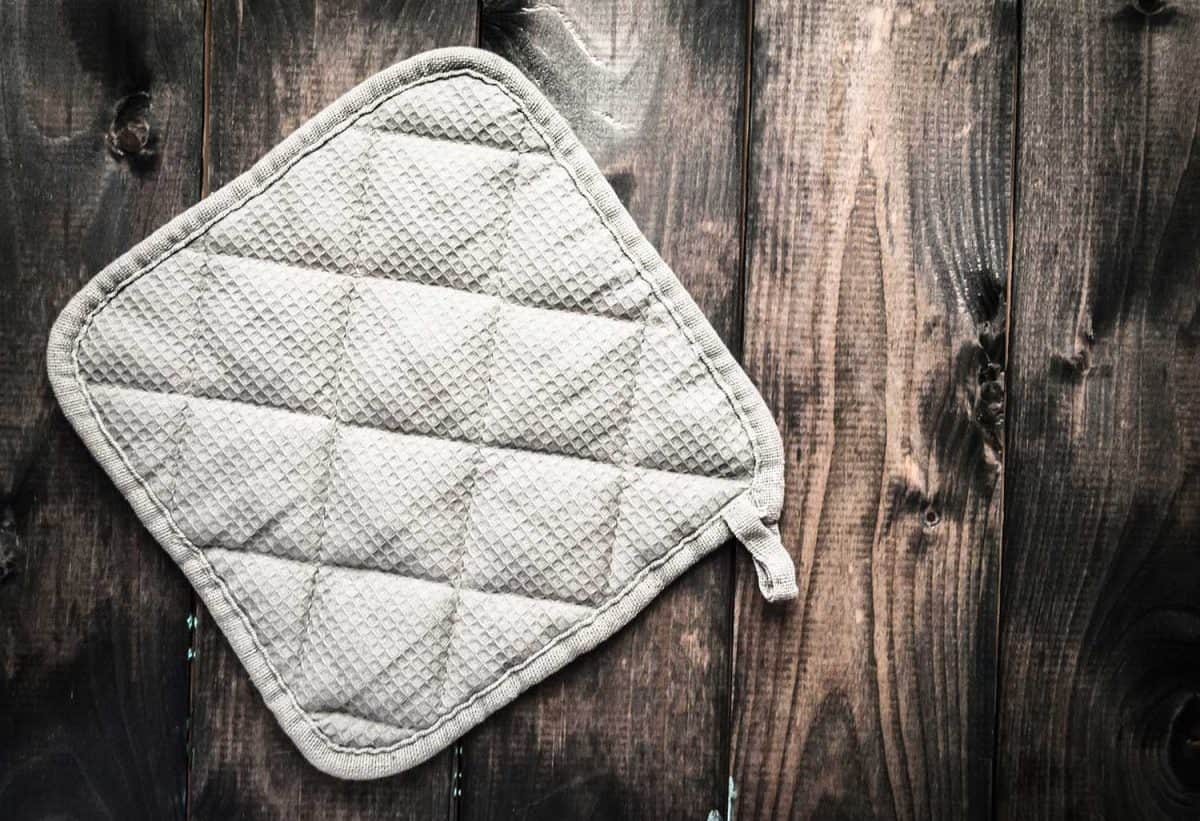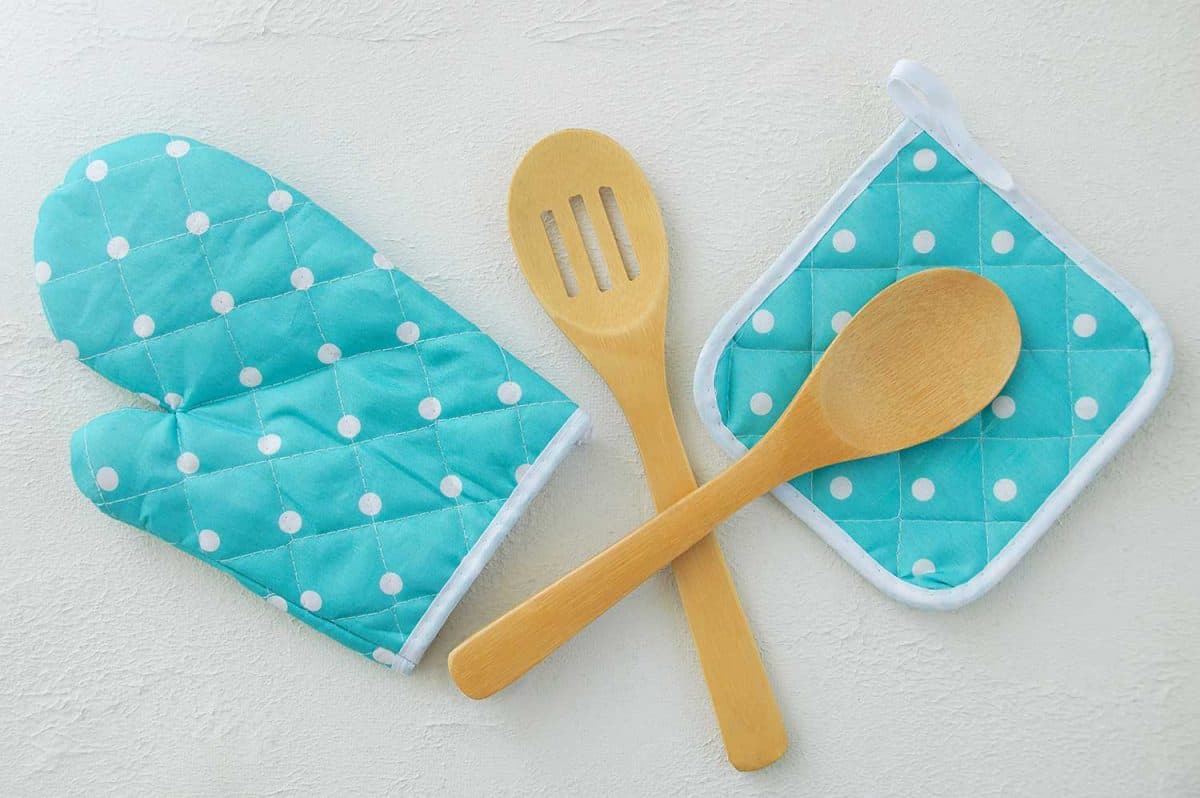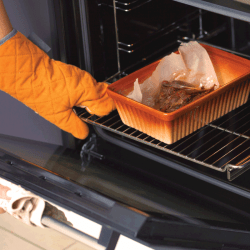Potholders and oven mitts are absolute necessities in any kitchen for chefs and amateurs alike. These items are essential to ensure safety in the kitchen. In your experience with these items, you may have wondered what the differences are between the two. We did the research for you and wrote this article to provide you with the answer you need.
Both potholders and oven mitts are made out of the same materials, most commonly either cotton or silicone. So, what are the differences? The largest difference between potholders and oven mitts is their shape. Oven mitts are mitten-shaped, whereas potholders are typically square, rectangular, or round. Additionally, you wear oven mitts just like mittens and hold onto potholders; therefore, mitts provide full coverage of your hand, wrist, and oftentimes your forearm.
Knowing what the differences in shape are, pertaining to use, will help you succeed in the kitchen. Have you ever wondered if there was an alternative to potholders and oven mitts? Keep reading to learn more about the benefits of these handy kitchen essentials.

Potholders
Potholders are usually round or square, but they can be found in a variety of funky and cool shapes. They can be used to protect your hands while moving hot pots and pans. The single most important characteristic of a potholder is that it is relatively flat. This makes it double as a trivet in a pinch, giving you a way to protect surfaces like countertops and dining tables from hot pots and pans.

These potholders are waterproof, and they're available in a bunch of fun designs. Click here to see them on Amazon.
Oven Mitts

Oven mitts are shaped a lot like a long, clunky mitten. They are great for handling hot pots and pans because they protect your entire hand and forearm from accidental burns. Many oven mitts also have heat-proof silicone grips to help prevent slippage.
Most oven mitts have more padding and insulation than potholders do, making them a little more heat resistant. Their shape and thickness prevent them from being used to protect surfaces the way a potholder would.
These oven mitts are super cute and practical; the pads that make up the paws are slip-proof. Click here to see them on Amazon.
Oven Gloves
Oven gloves are gaining steam with professional cooks and chefs. These gloves are popular in busy kitchens because they allow you to go from handling hot pans to chopping vegetables without having to stop and remove your clunky oven mitts. They allow you to get an excellent grip on pots and pans, which helps prevent kitchen accidents.
Most kitchen gloves are made from a variety of materials like polyester, silicone, and aramid, which is the same material found in Kevlar.
These gloves are heat resistant up to 1472℉, making them a great alternative to standard oven mitts. Click here to check them out on Amazon.
What Are They Made From?

Potholders and oven mitts often consist of the same materials. Cotton and silicone are the two most common materials for potholders and oven mitts. Some restaurants and professional chefs use items made from more durable materials like aramid. All materials have their advantages and disadvantages that make them more suitable for certain situations.
Cloth
Most cloth potholders and oven mitts are made out of thick cotton fabric or terry cloth and are padded with a thick, heat-resistant cotton or polyester batting. It's very important to use heat-resistant padding if you are planning to make your own potholders or oven mitts.
One of the cool things about cloth oven mitts and potholders is that there is usually a huge selection of different colors and patterns to choose from. One of the downfalls of cloth is that cotton is highly flammable, so if it falls onto a burner, it could cause a fire. Cloth isn't as heat resistant as other materials either, so if you choose cloth, avoid holding very hot dishes for more than a few seconds.
This two-pack of potholders is made from 100% cotton, and the lemon design is so charming. Click here to see them on Amazon.
Heat Resistant Silicone
Silicone is a great potholder and oven mitt material for masters and amateurs alike. The material provides grip naturally, and most silicone holders and mitts are heat resistant up to at least 400°F. You can find silicone mitts and holders in a variety of colors, but they don't typically have patterns.
Heat Resistant Silicone Potholder and Oven Mitt Set
This set has everything you need to get cooking with silicone. Click here to see this set on Amazon.
Aramid Blends
Oven gloves made of aramid are durable and extremely heat resistant. They are popular for barbecuing because you can turn your meat by hand instead of fighting with a pair of tongs. The heavy-duty material these gloves contain can help protect against knife blades as well. They are great for beginners because they can help prevent common kitchen injuries, but even professionals appreciate these gems.
How to Wash Potholders, Mitts, & Gloves
To clean cloth oven mitts and potholders, you should follow the care instructions to ensure the product's longevity. Washing cloth mitts and holders is as simple as putting them in the washer on gentle, then hang drying to prevent any shrinkage in the dryer.
Silicone is a little easier to clean; its non-porous nature means you can just wash it in the sink with a dishcloth and soapy water.
Read the care instructions on oven gloves before cleaning them. Most of the oven gloves available are machine washable.
Why Do Professional Chefs Use Towels Instead of Potholders?
Professional chefs and cooks always like to have a side towel nearby if they need to grab a hot pan quickly. Towels are far more flammable than most oven mitts and potholders, but professional chefs typically have more training than home chefs and have learned to use care with their towels. Many chefs also use oven gloves so they can create a more natural flow while working in the kitchen.
How Do You Re-Cover Old Potholders?
To re-cover an old potholder, you will need a sewing machine, a good pair of scissors, and two pieces of pure cotton fabric that are 1-inch larger than the original potholder on all four sides. Sew the two new pieces of fabric together using a 1/4-inch seam around three of the edges. Slip the old potholder into the new cover and hand sew the final seam for a perfect cover.
What Can I Use Instead of a Potholder?
Trivets, like potholders, can withstand high temperatures and protect surfaces. They are available in a variety of different materials like bamboo and silicone. You can set hot pots and pans on a towel, but make sure to fold it over a couple of times to provide enough protection. If you have not received training on using a towel to remove food from the oven or stove, avoid attempting this.
If You Can't Handle The Heat...
...Then get some new oven mitts! Now that you know all the details about oven mitts and potholders, you're ready to decide which item best suits your needs in the kitchen. Have fun looking at all the different potholders and oven mitts you can find, and enjoy the peace of mind that comes with knowing your kitchen is a little bit safer.
If you are on the hunt for the neatest new kitchen gadgets, you'll love our article "23 Unique Gifts For Cooking Enthusiasts."
If you are looking to learn more about kitchen tools, check out our article "How Long Is A Cleaver Knife? [And Why Does It Have A Hole In It?]"






![Kitchen glove, potholder, oven protection are hanging over white brick wall, 12 Types of Pot Holders [And How To Choose]](https://kitchenseer.com/wp-content/uploads/2021/06/Kitchen-glove-potholder-oven-protection-are-hanging-over-white-brick-wall-250x250.jpg)
![Mother taking out apple pie fresh from the kitchen oven, What Size Should A Pot Holder Be? [With Examples!]](https://kitchenseer.com/wp-content/uploads/2021/06/Mother-taking-out-apple-pie-fresh-from-the-kitchen-oven-250x250.jpg)


![Floral oven mitten on wooden table. 9 Types Of Oven Mitts [And How To Choose]](https://kitchenseer.com/wp-content/uploads/2021/06/Floral-oven-mitten-on-wooden-table.-9-Types-Of-Oven-Mitts-And-How-To-Choose-250x250.png)